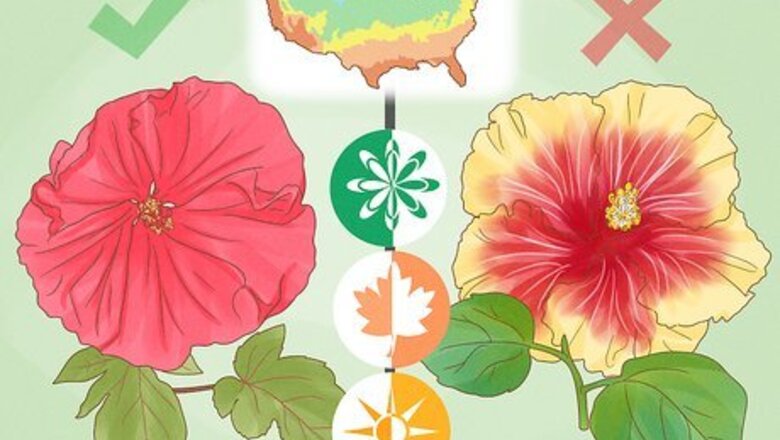
views
Planting Hibiscus
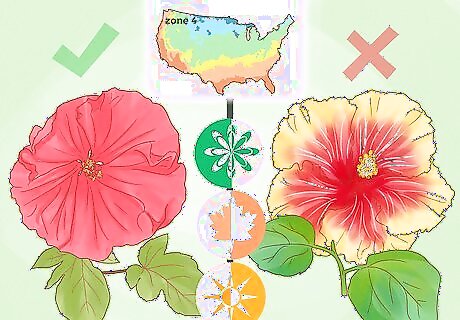
Grow hardy hibiscus, not tropical hibiscus. There are a few different types of hibiscus plants, and hardy and tropical are two of the more common ones. If you intend to keep your plants outside, hardy hibiscus will likely acclimate to the weather better. This type of hibiscus is hardy to USDA zone 4. Plant them during the spring, summer, or fall to get the best results. If you’re planting hibiscus in an area that’s warm all year around, like Florida, tropical hibiscus should be able to make it through the winter. All species of hibiscus will likely die once the temperatures drop below 55 °F (13 °C). You can prune the dead parts of the plant close to the ground. You may also consider growing rose of Sharon, which is a hardy shrub variety of hibiscus that grows well in zones 5 through 9.
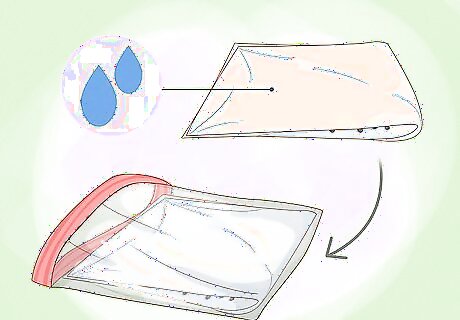
Buy and germinate hibiscus seeds in a moist napkin and plastic bag. Go to your local garden center and purchase hibiscus seeds. Then dampen a napkin or paper towel with water and wrap the seeds in the paper towel. Put the paper towel and seeds in a plastic bag and check on the seeds every few days. Once they’ve sprouted, they’re ready to be planted.
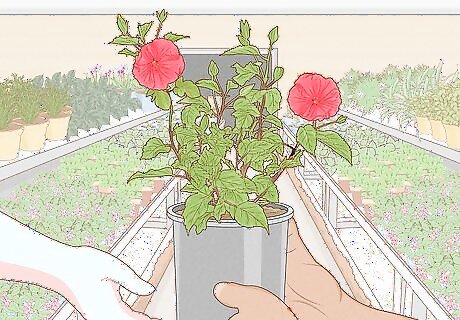
Purchase young plants from a nursery. Buying a plant instead of planting your hibiscus from seed is a good option if you are a beginner gardener. You should be able to find a variety of hibiscus plants at one of your local nurseries.
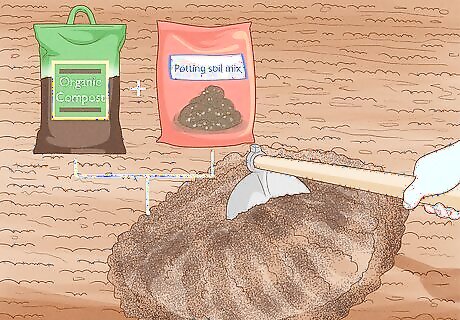
Put compost and potting mix in pots or your garden. Hibiscus plants thrive in many different types of soil, so it’s best to just get a standard potting mix to plant them in. Be sure to mix in some compost, as this will help balance the pH. Fill your pots with this mixture or mix compost into the soil in your garden where you plan to plant the hibiscus.
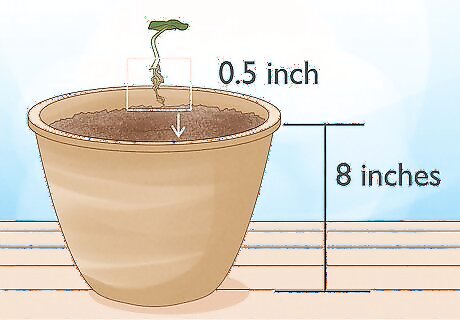
Transfer the sprouts to a pot. It is best to transfer sprouted seeds to a pot and allow them to grow in the pot until they are large enough to transfer to the ground. Once the soil is prepped, take the sprouts out of the plastic bags. One by one, gently push their roots about 0.5 inches (1.3 cm) below the soil’s surface with your fingers. If you’re planting hibiscus bushes, plant them in 8 in (20 cm) pots.
Providing Basic Care
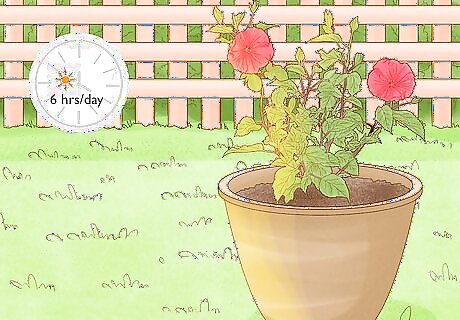
Keep the hibiscus in a location that gets 6 hours of sunlight each day. Put your hibiscus plants in a spot in the yard that gets full sun so that they’ll thrive. If you can, place them somewhere where they get sunlight in the morning or late afternoon but are protected in the shade during the hottest, sunniest hours of the day (noon to 4 p.m.). If you plant the hibiscus in pots, you can move them to shadier or sunnier areas if you notice that they’re getting too much or too little sun.
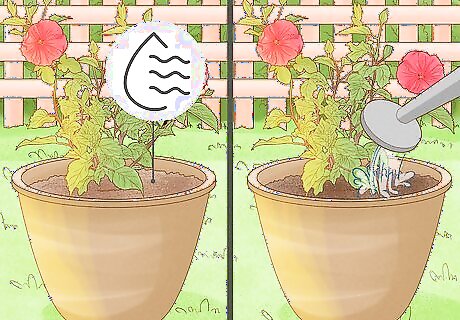
Keep the soil moist, but not saturated. Each time you touch the soil and it feels dry, water your hibiscus. These plants do best with slightly moist soil, but it’s necessary to provide drainage so that the soil doesn’t become too saturated. If you’re growing your hibiscus in a pot, make sure there are drainage holes in the bottom so that the soil doesn’t get too wet and lead to root rot.
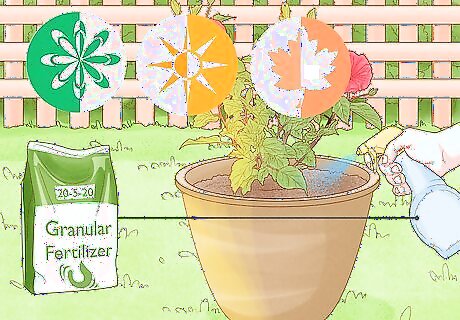
Fertilize the hibiscus weekly during the spring, summer, and fall. Each year from March to October, you’ll need to fertilize your hibiscus plants weekly to ensure that they get the proper nutrients. Purchase a water soluble fertilizer, mix it with water, and pour or spray it onto the soil. Make sure to get a fertilizer that’s low in phosphorous, such as 20-5-20, as high amounts of phosphorous may lead to smaller blooms.
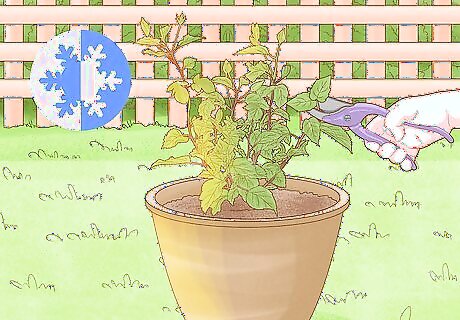
Prune during winter to encourage flowering. During the winter, use pruning shears to cut off all of the sub-branches that are smaller and branch off from the main framework of the plant. This may make multiple flowers pop up where each previous sub-branch was located once the weather gets warmer.
Keeping Hibiscus Warm During Winter

Move potted plants close to the house. If your hibiscus plants are potted, move them as close to the outside of your home as possible during the winter. This will make them a few degrees warmer.
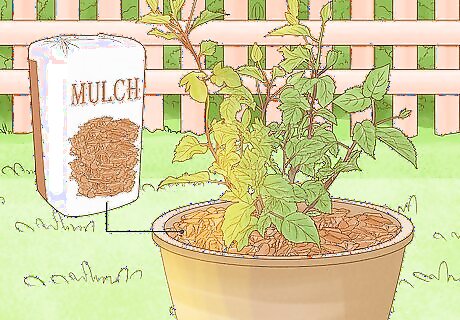
Apply a layer of mulch over the soil. In the winter time, keep the soil as warm as possible by providing mulch. Sprinkle a layer on top of the soil all around the base of the plant to get the best results.
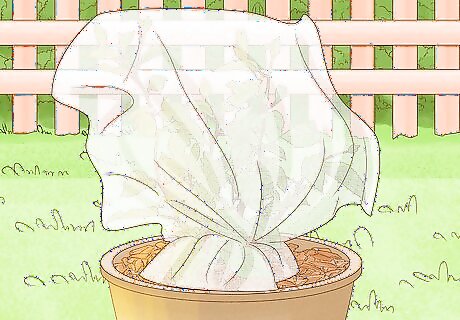
Cover the hibiscus plants in frost cloths. Go to your local garden center and purchase heavy frost cloths to cover your hibiscus plants with. This will help them stay protected them from the elements and raise their temperature several degrees.
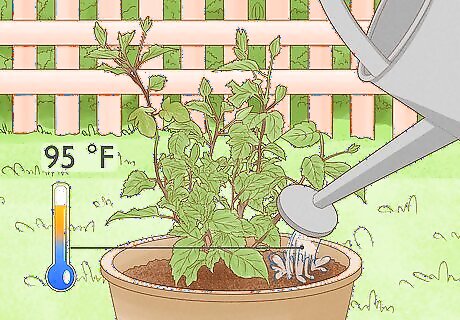
Water your hibiscus with warm water. Hibiscus plants typically thrive when given warm water, despite the time of year. However, warm water is crucial during winter time. Water your plants with water that is about 95 °F (35 °C) to keep them warm and healthy.












Comments
0 comment